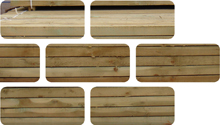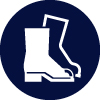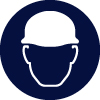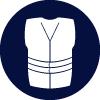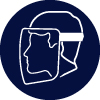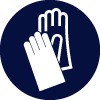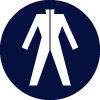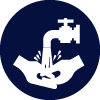
CCA Treated Timber 17 02 04
All timber that has been pressure impregnated with copper chrome arsenic (CCA) wood preservative are absolute hazardous wastes and must be consigned as hazardous (or special) waste. Although frequently used in many applications since the 1930s, CCA treated timber products were banned from sale in UK in September 2006. They may be imported from outside the European Union for higher hazard and critical uses where there is no repeated skin contact, for example highway safety barriers. Often referred to as tanalised timber, CCA treated timber has been supplied in various lengths and dimensions depending on the desired performance or architectural requirements.
Usage & Probable Locations
CCA treated timbers have been used in various applications to protect wood against fungal decay and insect attack such as termites and marine borers. They are commonly found in industrial, agricultural and maritime buildings and structures where the environment is wet, damp and sometimes corrosive. CCA treated timber products include boards, posts, power and telecommunication poles, structural piles, railway sleepers, dimensional timbers, decking, retaining structures, lining of cooling towers, fencing, cladding boards, roof timbers, marine walkways, jetties, bridges, noise barriers, highway safety barriers and fences, playground equipment, patios and garden furniture.
Personal Protective Equipment
PPE requirements indicated are for guidance purposes only. DRIDS has identified the PPE that is mandatory on all demolition projects and ones that may be required subject to site specific Risk Assessment & Method Statement (RAMS). Hover over the icon to determine the types of PPE required for the removal of this material.
Removal, Segregation & Storage
CCA treated timber products should be carefully deconstructed, segregated and stored safely according to hazardous (special) waste guidelines and protocols. They should be stored on flat, impermeable ground that will not enter surface water drains. They should be removed from site as quickly as possible and always with the appropriate paperwork. Do not cut, shred or burn the materials on site. Do not include CCA treated timbers with other segregated timbers. Always refer to the site specific RAMS for any specialist guidance.
Tools
Fixtures, Fittings & Connections
Health & Safety
Subject to task-specific Risk Assessment & Method Statement (RAMS). Only remove CCA treated timber products when fully aware of their hazards. Wear gloves and protective face mask when handling CCA treated timber products to prevent inhalation, irritation, cuts and abrasion. CCA treated timbers that are wet may leach chemicals which are corrosive and in high concentrations carcinogenic. Avoid drilling or sawing unless using a facemask. Never burn CCA treated timber on site, in open furnaces or on barbeques. Use eye protection when using hand tools. Limit hand, arm and whole body vibration when using impact tools. Use appropriate access and protective equipment determined by RAMS.

